Photos:: Altered Oceans
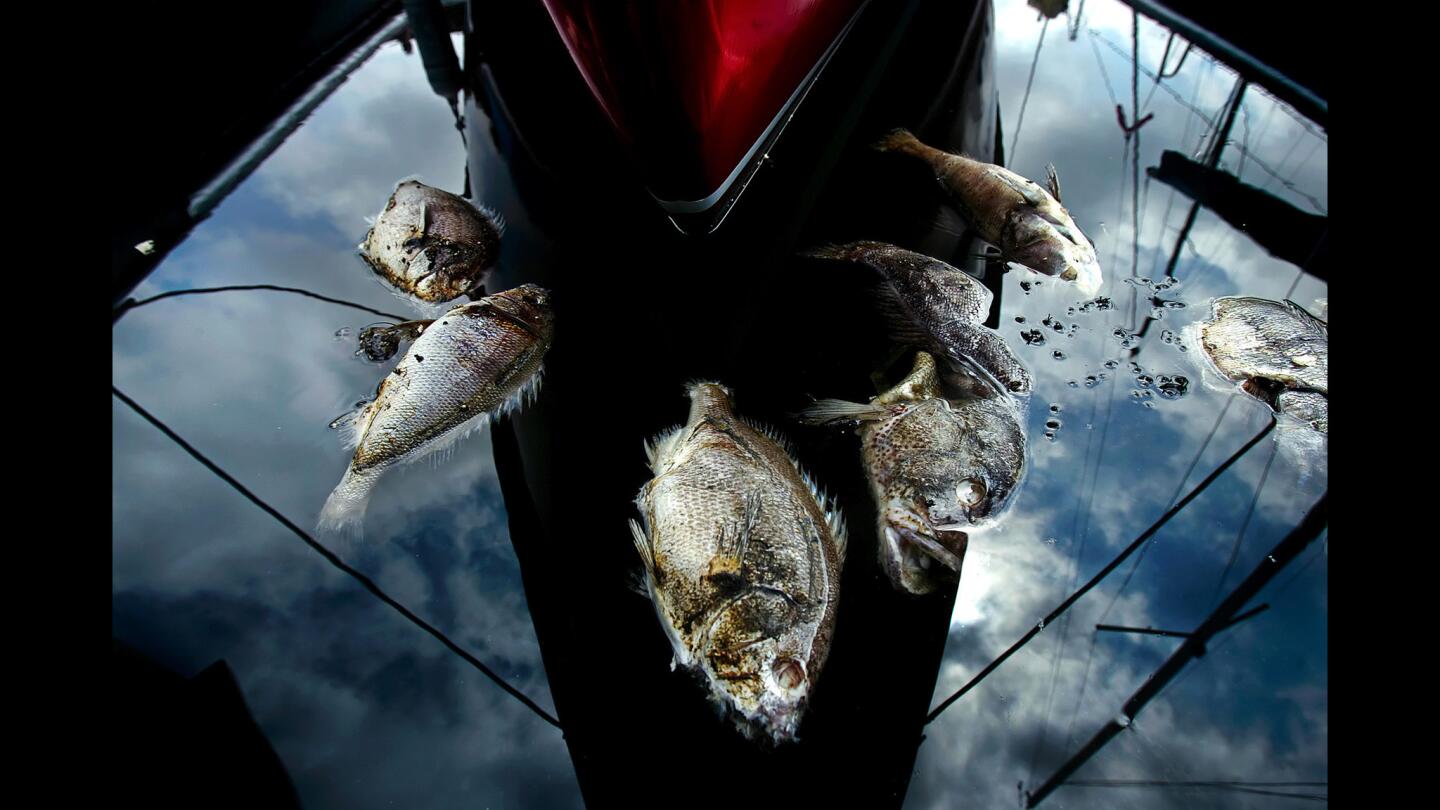
Redondo Beach -- A harmful algal bloom swept into King Harbor in Redondo Beach, causing massive fish kills. Residents complained about the heavy, putrid smell that lasted for weeks while local businesses recorded losses. (Rick Loomis / Los Angeles Times)
This five-part series on the crisis in the world’s oceans was published in July and August of 2006. The series -- by reporters Kenneth R. Weiss and Usha Lee McFarling and photographer Rick Loomis -- won the 2007 Pulitzer Prize for explanatory reporting.
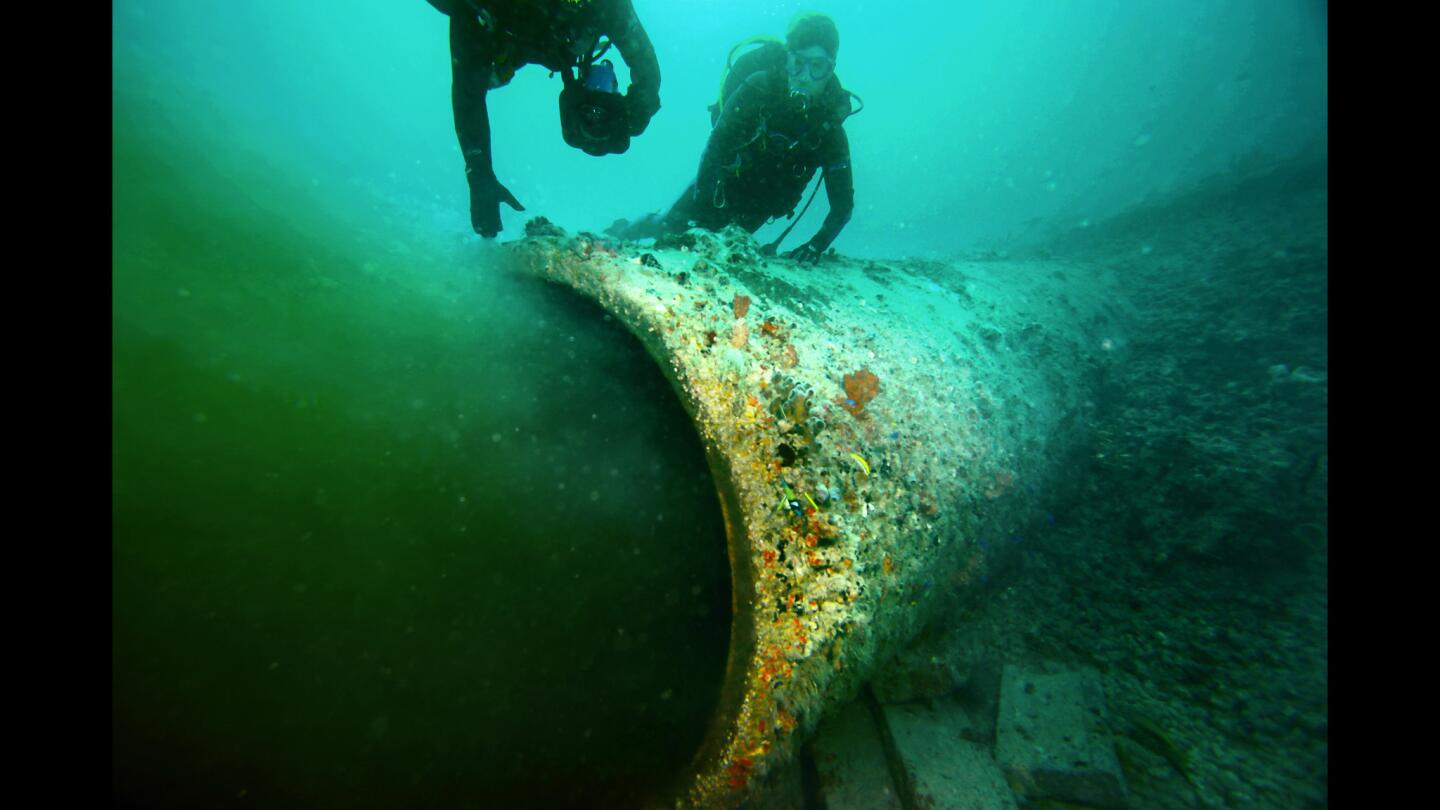
Partially treated sewage, above, flows into the ocean off Hollywood, Fla. The effluent meets government standards but has nutrients that fuel algae growth. (Rick Loomis / Los Angeles Times)
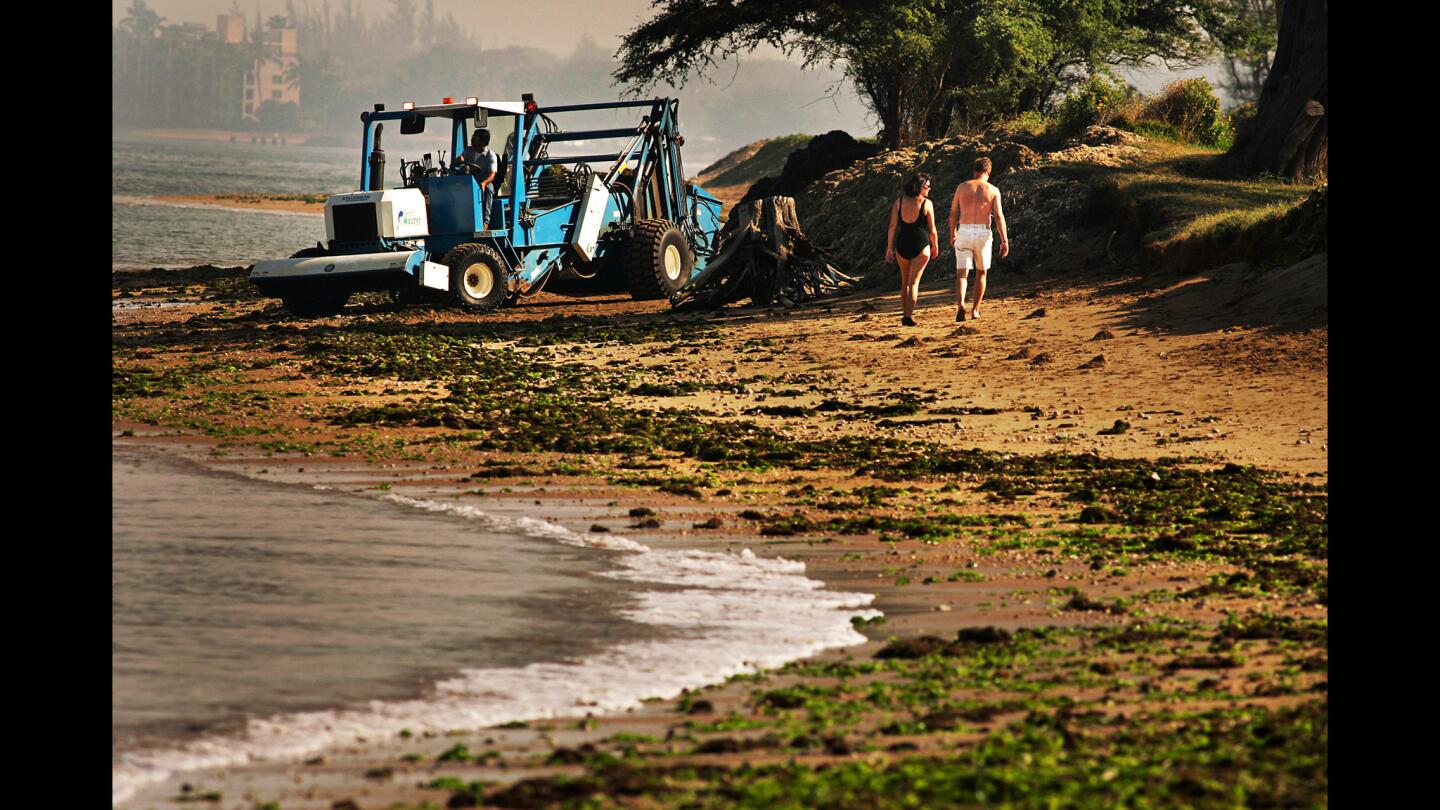
Joe Estrella works the beach in north Kihei, Hawaii, every morning riding the Beachmaster 2000, a modified potato picker that scoops the rotting algae off the beach and deposits it in piles to reduce noxious odors. The seaweed grows at extraordinary rates, fed by groundwater water laced with ground-injected sewage and other nutrients that sweep down Maui’s steep hillsides into the sea. (Rick Loomis / Los Angeles Times)
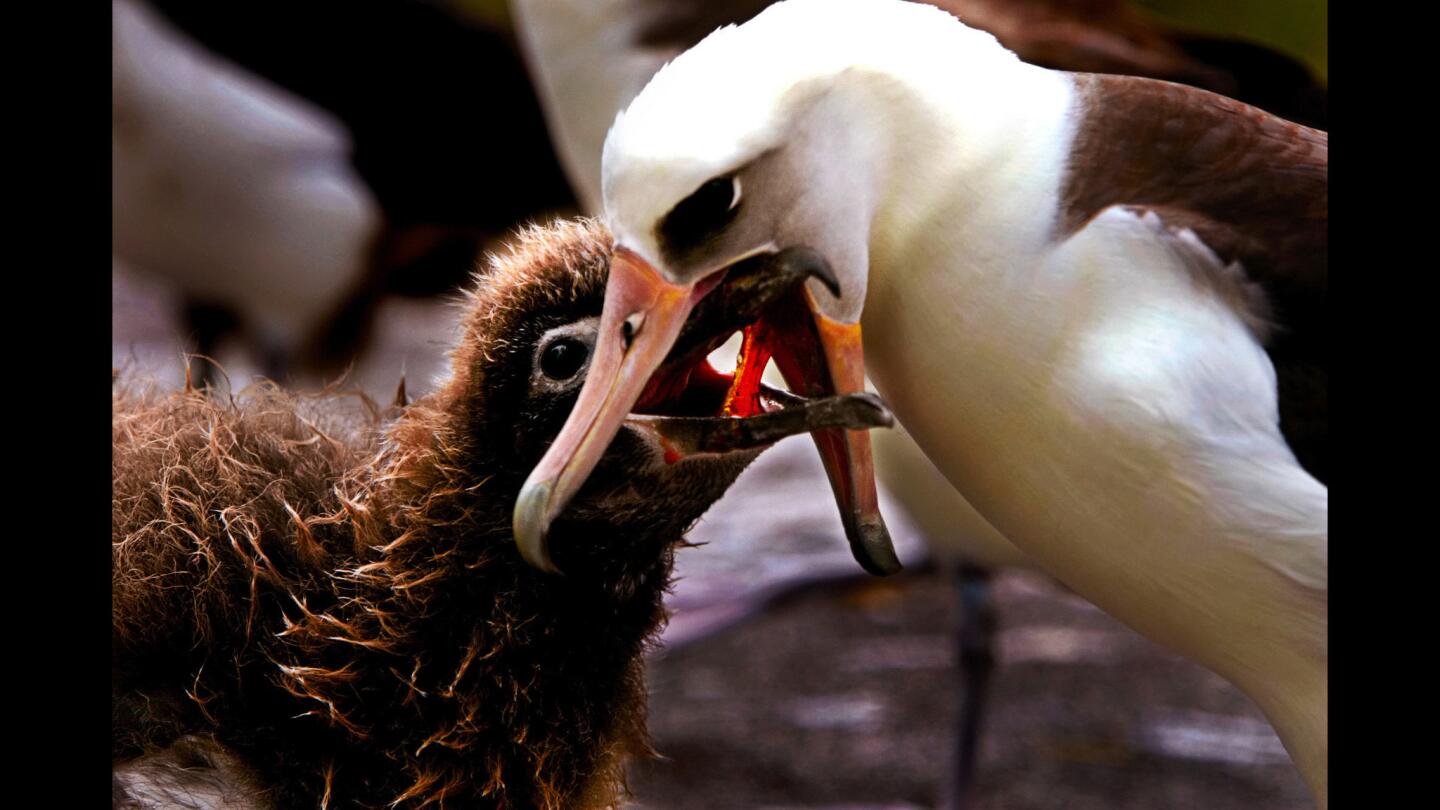
An adult laysan albatross regurgitates its catch to feed the growing chick on the Midway Atoll. Albatross parents scour the sea surface for fish and squid to bring back to nourish their single chick. Too often, they pick up bits of plastic debris. As many as 200,000 chicks -- about 40% of the total -- die on this island before getting a chance to take flight. Many of them succumb to dehydration, the plastic taking up too much room in their stomachs for proper nourishment. (Rick Loomis / Los Angeles Times)
Advertisement
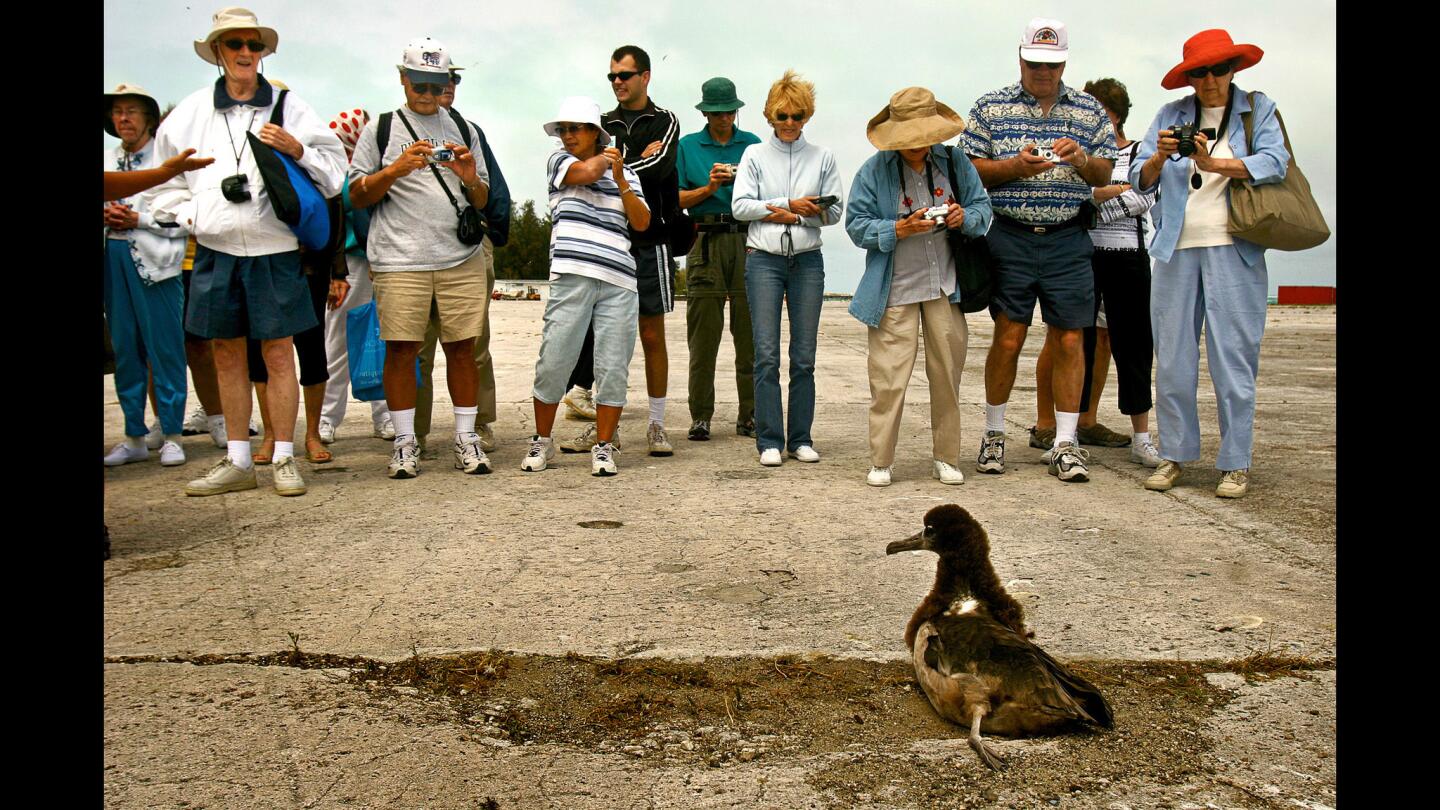
A group of tourists on Midway Atoll become enthralled by one of hundreds of thousands of juvenile albatross that fledge on the island before heading off to a lifetime spent at sea. (Rick Loomis / Los Angeles Times)
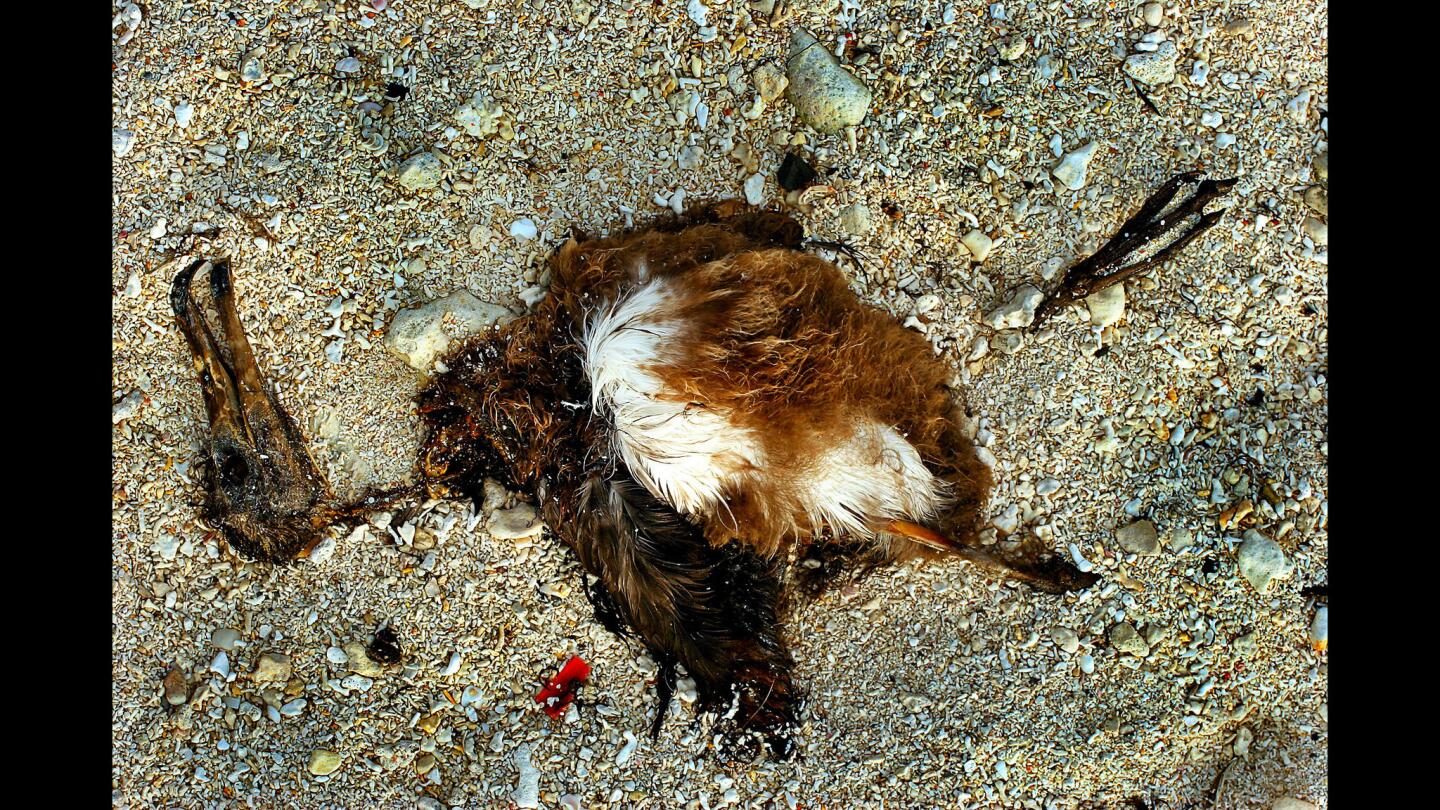
A dead juvenile albatross in the sands of Midway Atoll. More than 2 million birds nest on Midway Atoll’s cluster of islands every year, including 1.1 million laysan albatross and black-footed albatross. (Rick Loomis / Los Angeles Times)
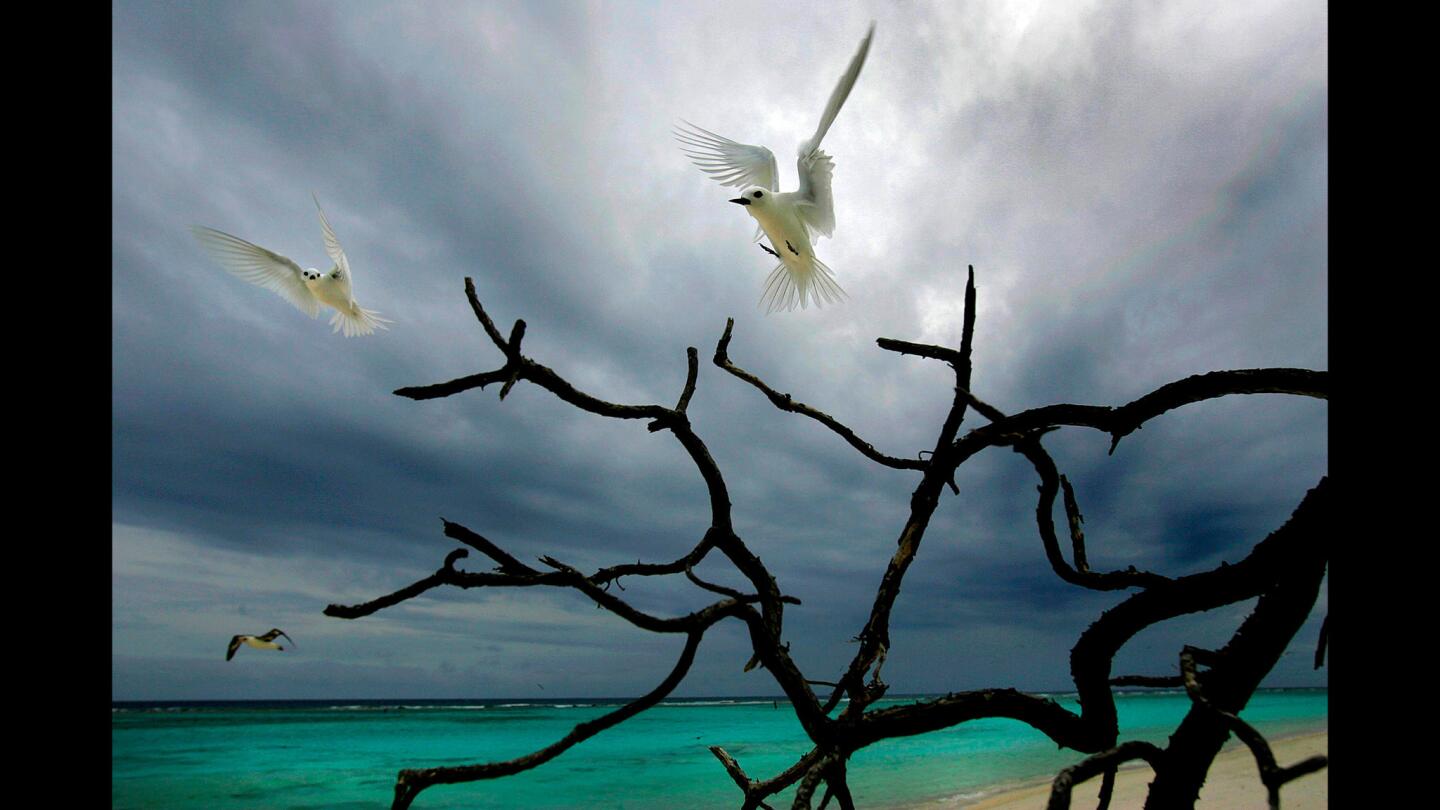
Midway Atoll is a major rookery for white terns, albatross and several other species of birds. (Rick Loomis / Los Angeles Times)
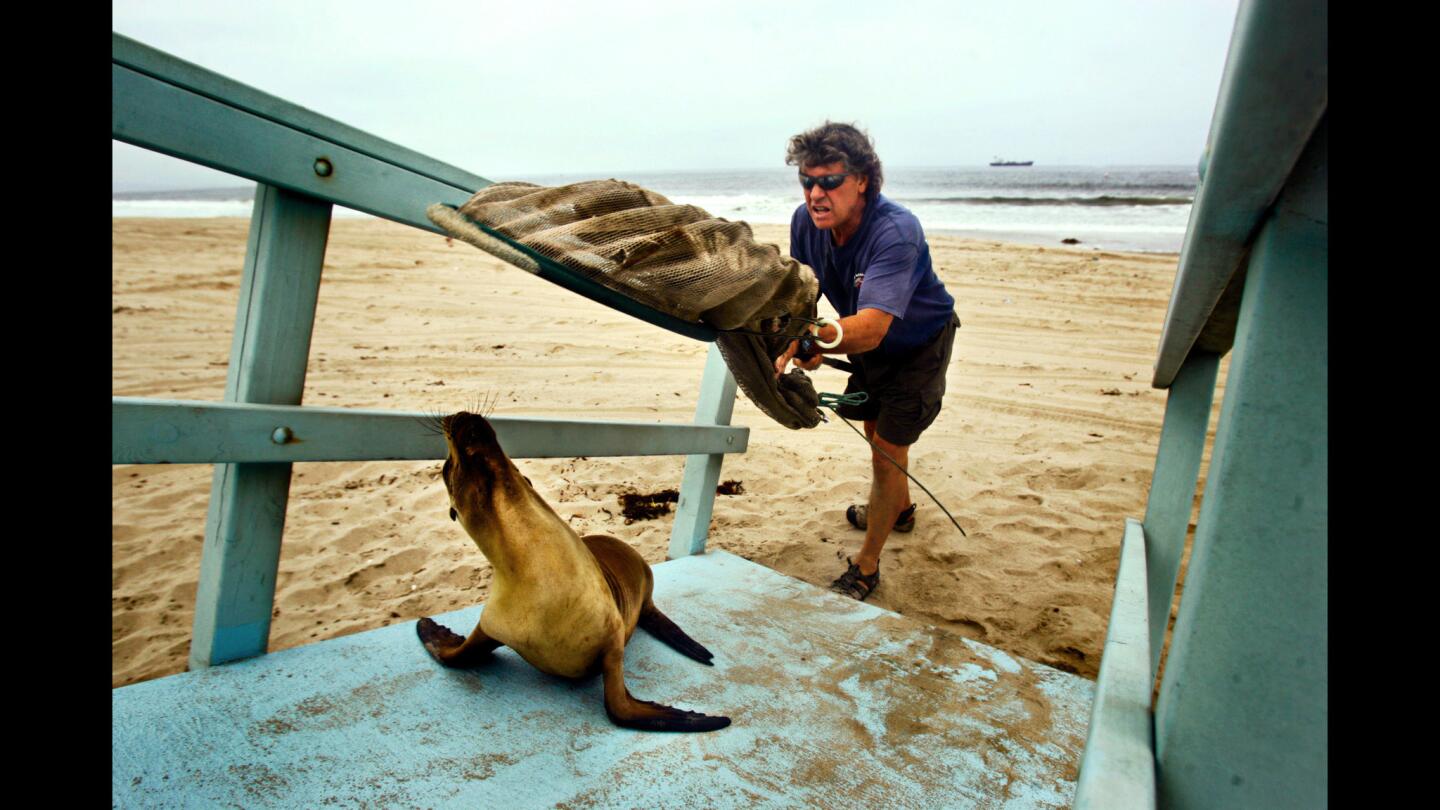
Peter Wallerstein, president of The Whale Rescue Team, based in Marina del Rey, herds another stranded sea lion into a net for transport to a rehab center in San Pedro. The outbreaks of domoic acid have kept him hopping since 1998. (Rick Loomis / Los Angeles Times)
Advertisement
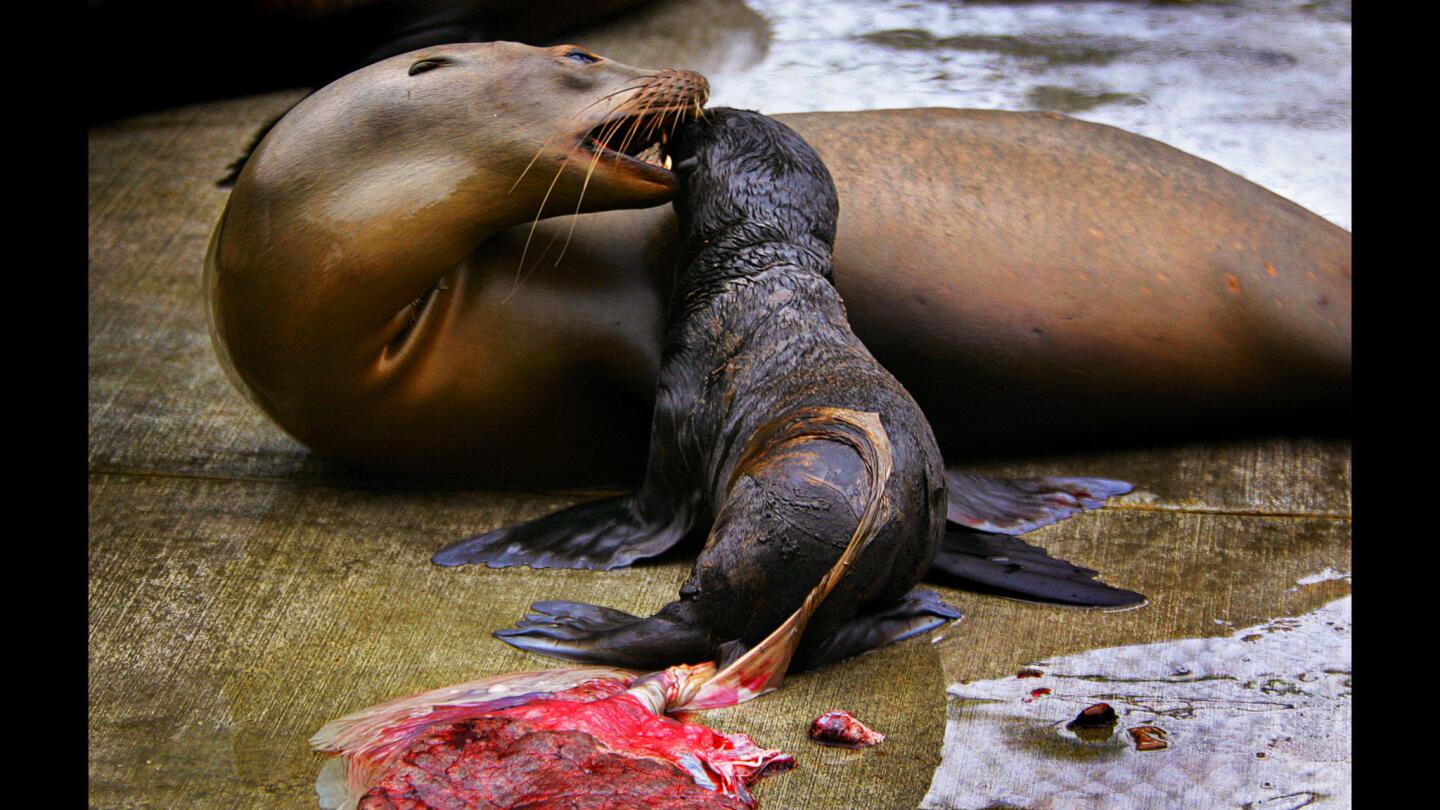
A female California sea lion bites at her calf shortly after giving birth. Veterinarians and animal technicians at rehab centers such as the Marine Mammal Care Center in San Pedro notice that female sea lions suffering from memory-damaging domoic acid usually ignore their pups, and sometimes viciously attack them. (Rick Loomis / Los Angeles Times)
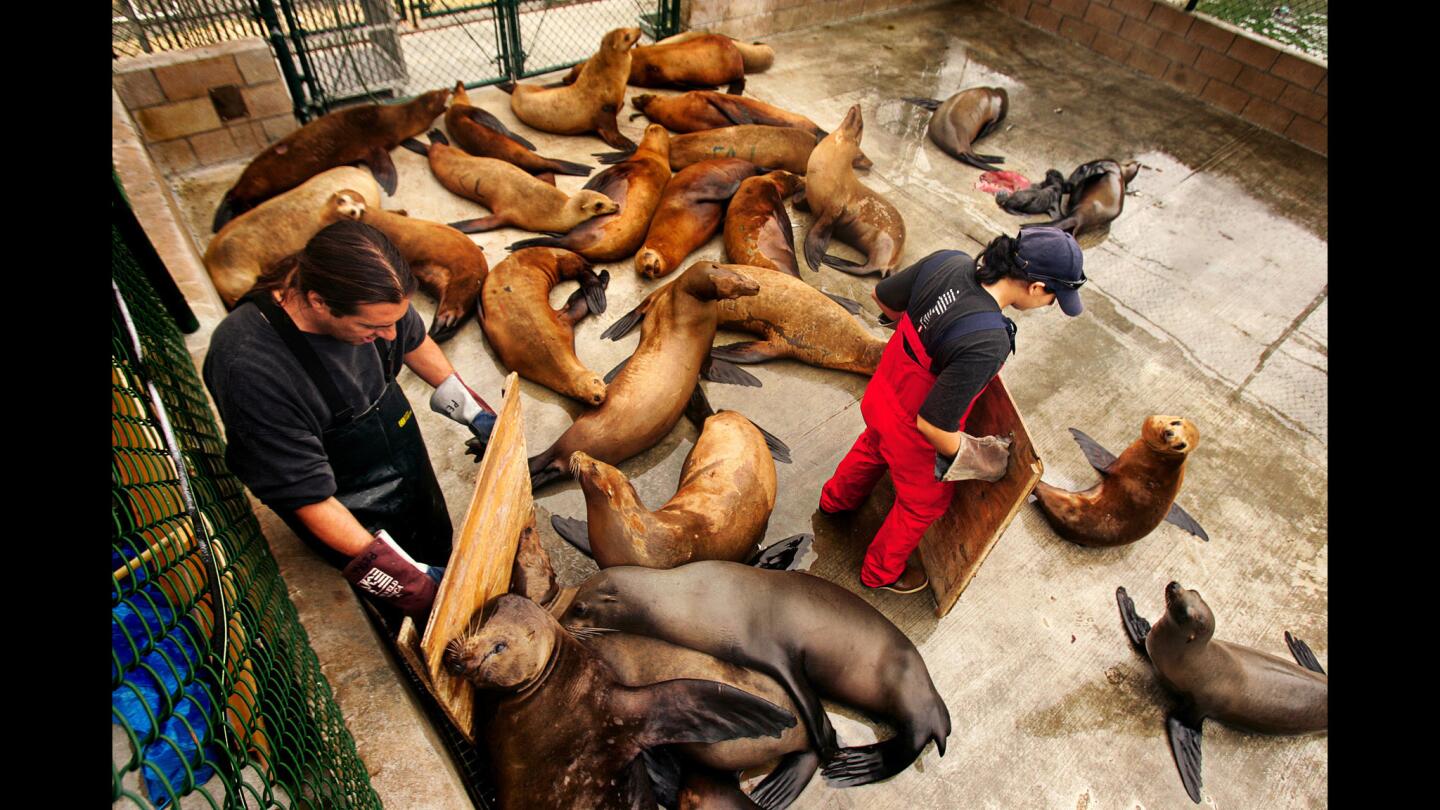
Like the other half-dozen marine mammal rehab centers in California, the Marine Mammal Care Center in San Pedro is frequently overrun by a California sea lions suffering from domoic acid poisoning. The sea lions picked up the toxic by eating anchovies or sardines contaminated with plankton or algae, pseudo-nitzschia, which produces the brain-damaging neurotoxin. (Rick Loomis / Los Angeles Times)
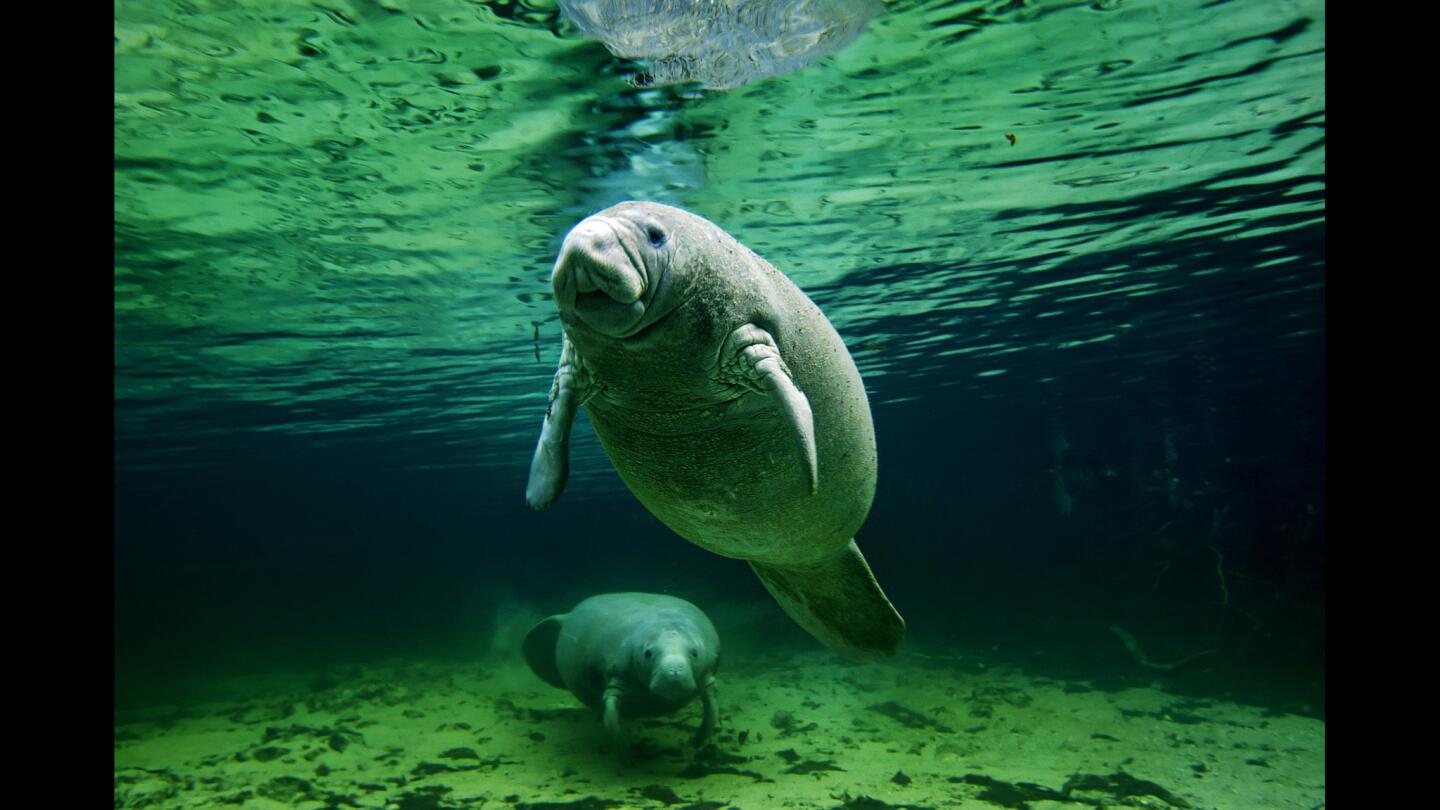
A female manatee and her calf lounge in a clear and warm freshwater spring in Florida’s Crystal River. The manatees hang out by the warmer water during the winter and then migrate into salt water as it warms in the spring. During this migration in recent years, manatees have been dying from breathing or inadvertently ingesting brevetoxin, a potent neurotoxin produces by a toxic algae called karenia brevis. (Rick Loomis / Los Angeles Times)
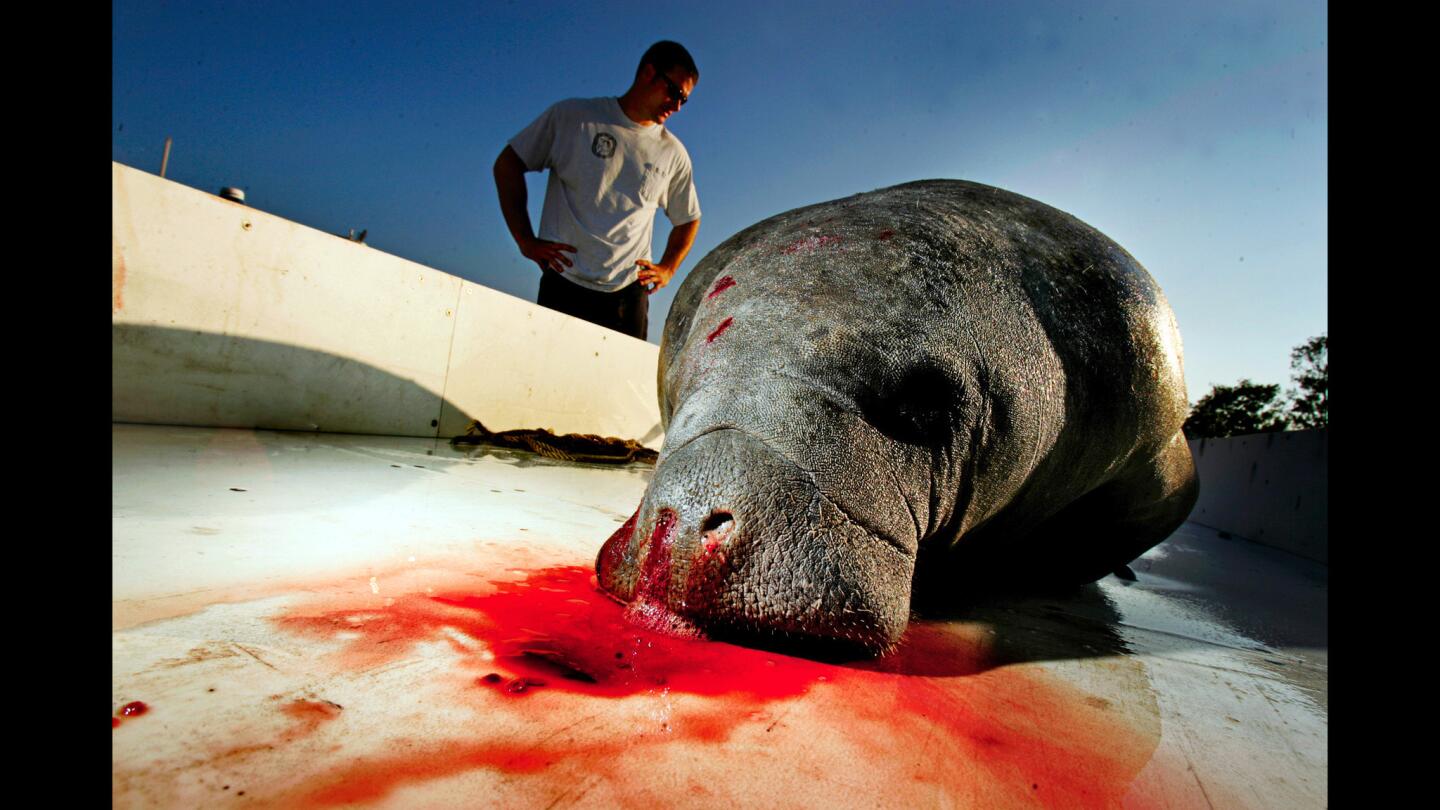
Bleeding from the nose is one of the indicators that a manatee has died from breathing or eating sea grass tainted with brevetoxin. Andy Garrett, a scientist with Florida’s Fish and Wildlife Research Institute, loaded the carcass into a trailer to take it back to the state’s Marine Mammal Pathobiology Laboratory for a necropsy. (Rick Loomis / Los Angeles Times)
Advertisement
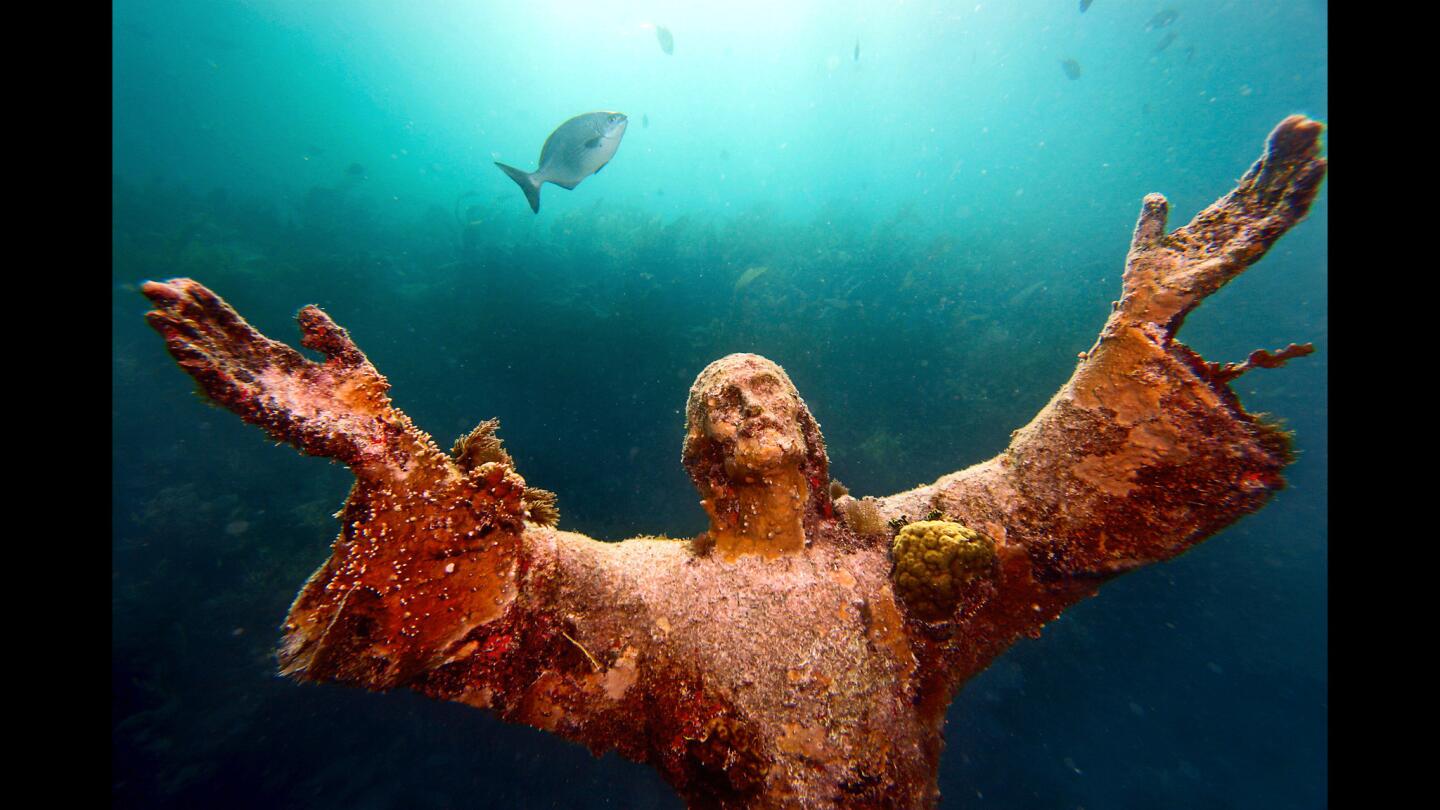
Weeks after it was scrubbed by Hurricane Wilma, a garden of different algae and seaweed began to grow on Christ of the Abyss in the Florida Keys. The 8 1/2 foot, 4,000-pound bronze sculpture of Jesus Christ stands in 25 feet of water off of Key Largo, Fla. It was installed in 1965 as tourist attraction in John Pennekamp Coral Reef State Park. (Rick Loomis / Los Angeles Times)
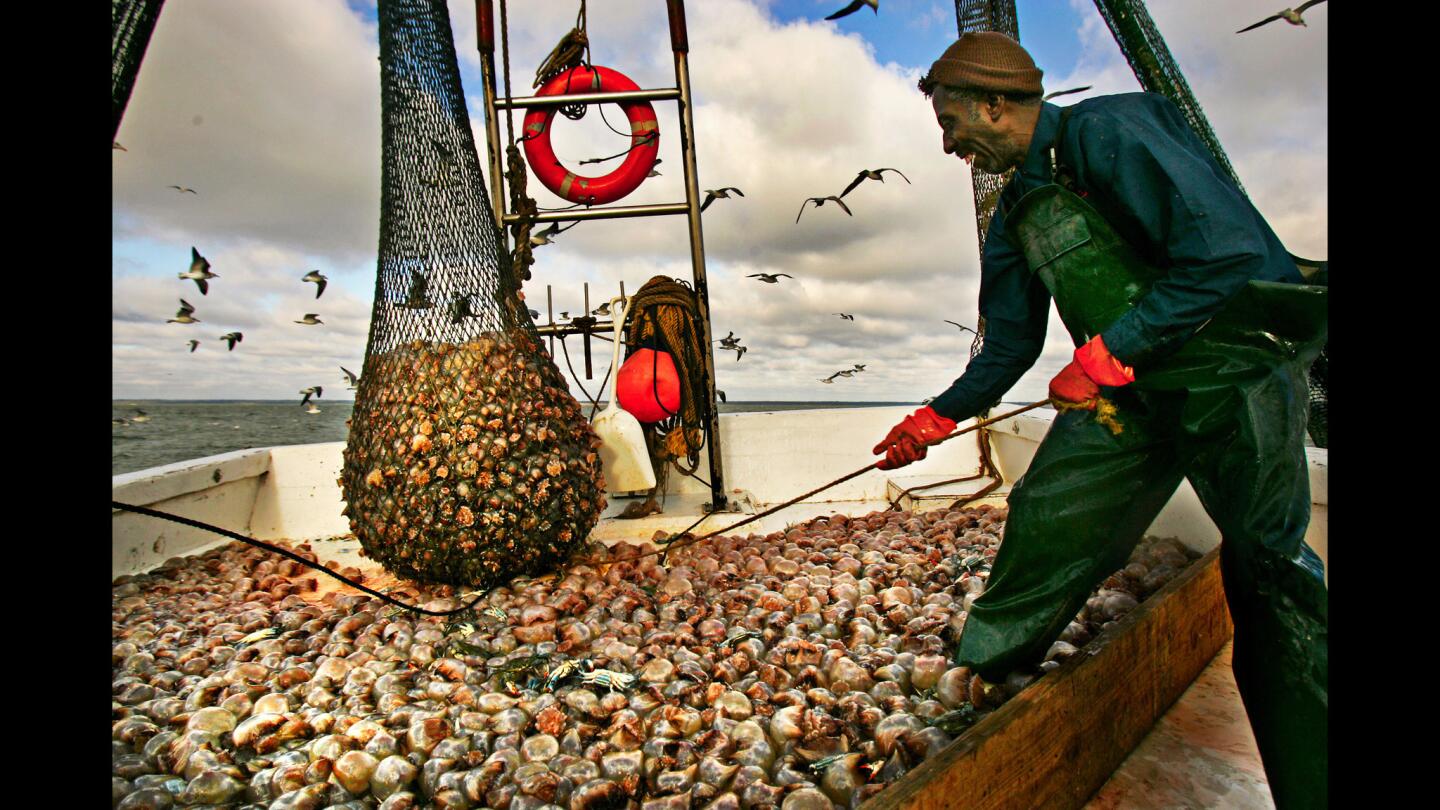
Champ Warren, 52, stands ankle deep in jellyfish on board the Blessed Assurance off the coast of Georgia. (Rick Loomis / Los Angeles Times)
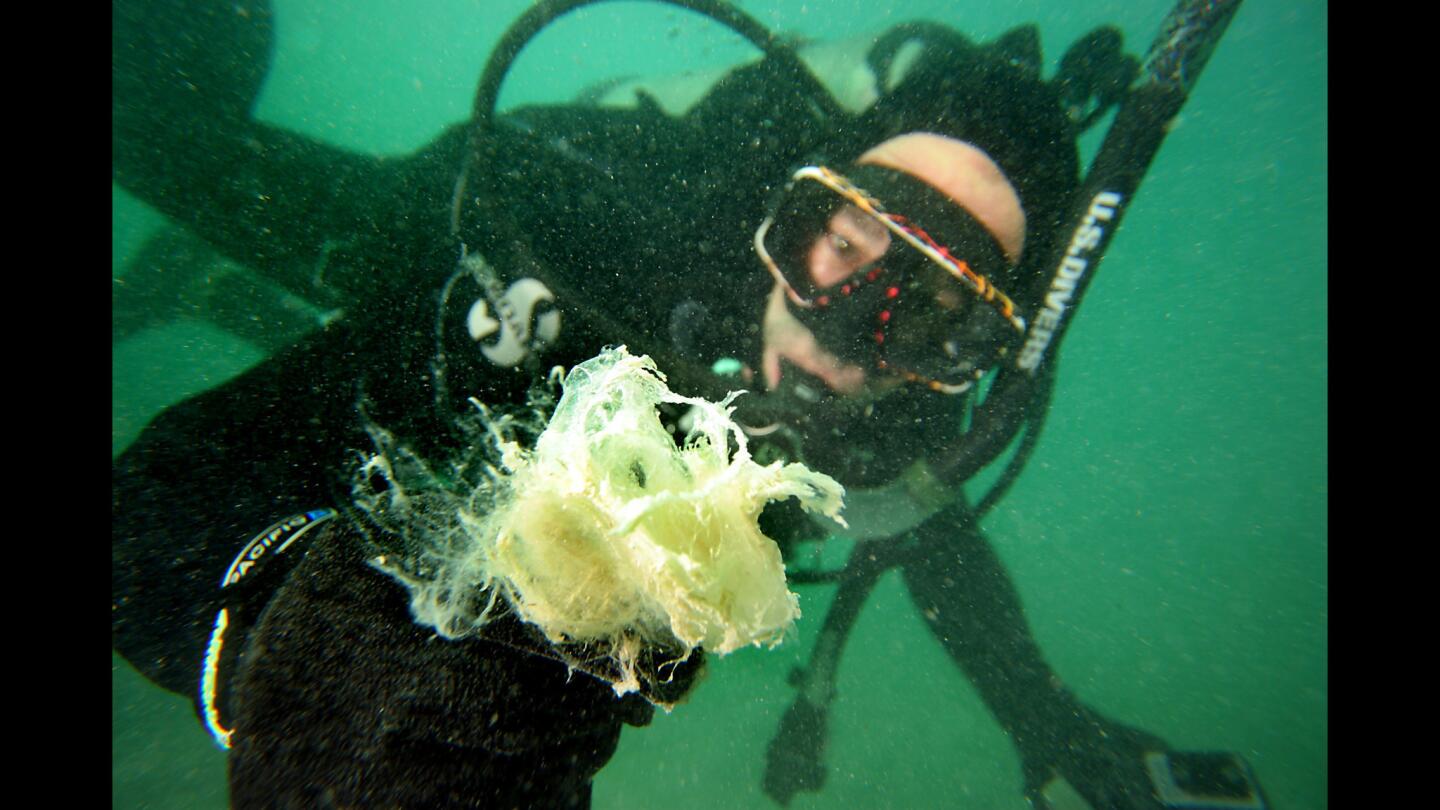
Brian LaPointe, a marine scientist with Harbor Branch Oceanographic Institute in Fort Pierce, Fla., plays with what he suspects is a matrix of algae and bacteria, similar to the enormous balls of mucilage found in the northern Adriatic Sea. This one is in Looe Key, Fla., where LaPointe has been documenting detrimental changes for more than 20 years. (Rick Loomis / Los Angeles Times)
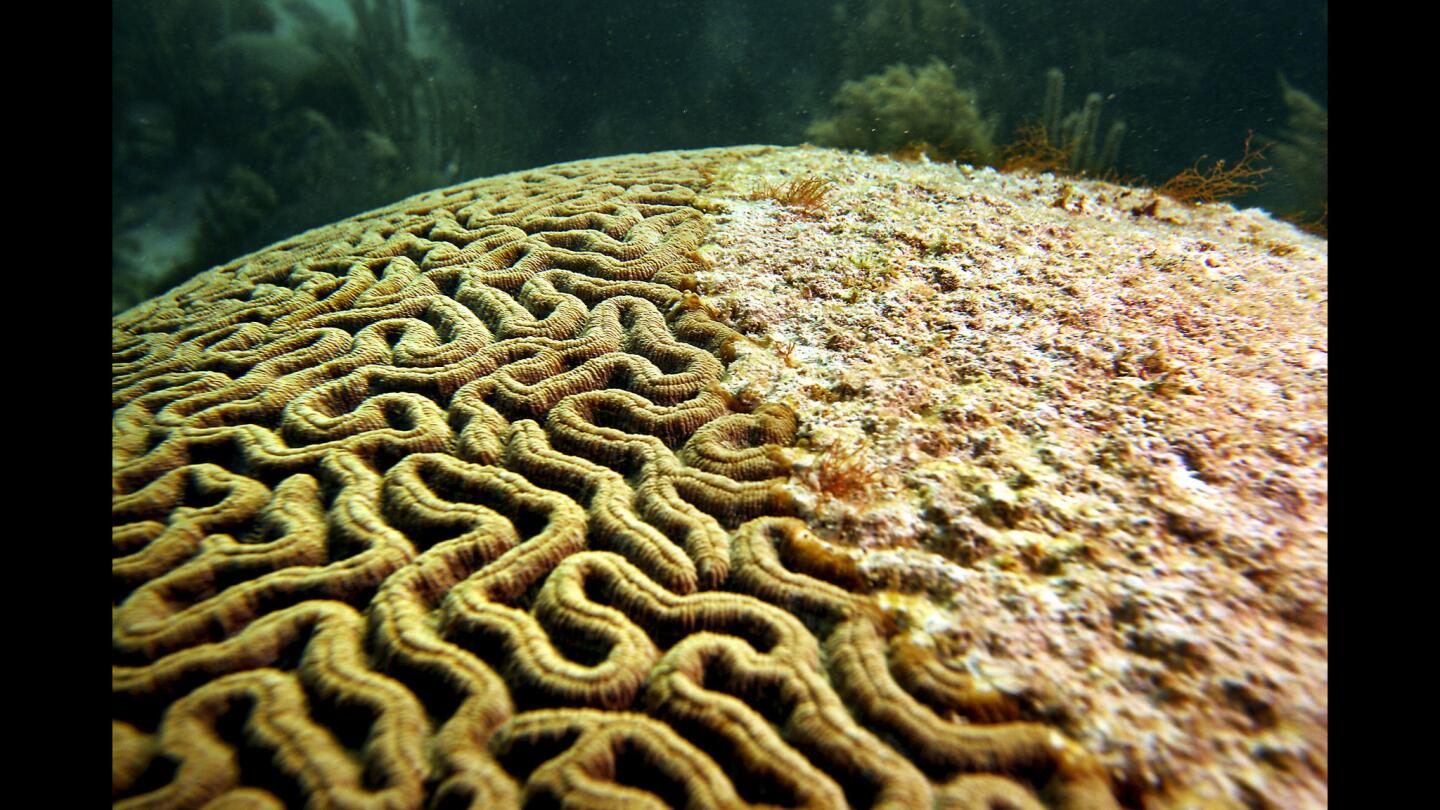
Coral disease in the Florida Keys. (Rick Loomis / Los Angeles Times)
Advertisement
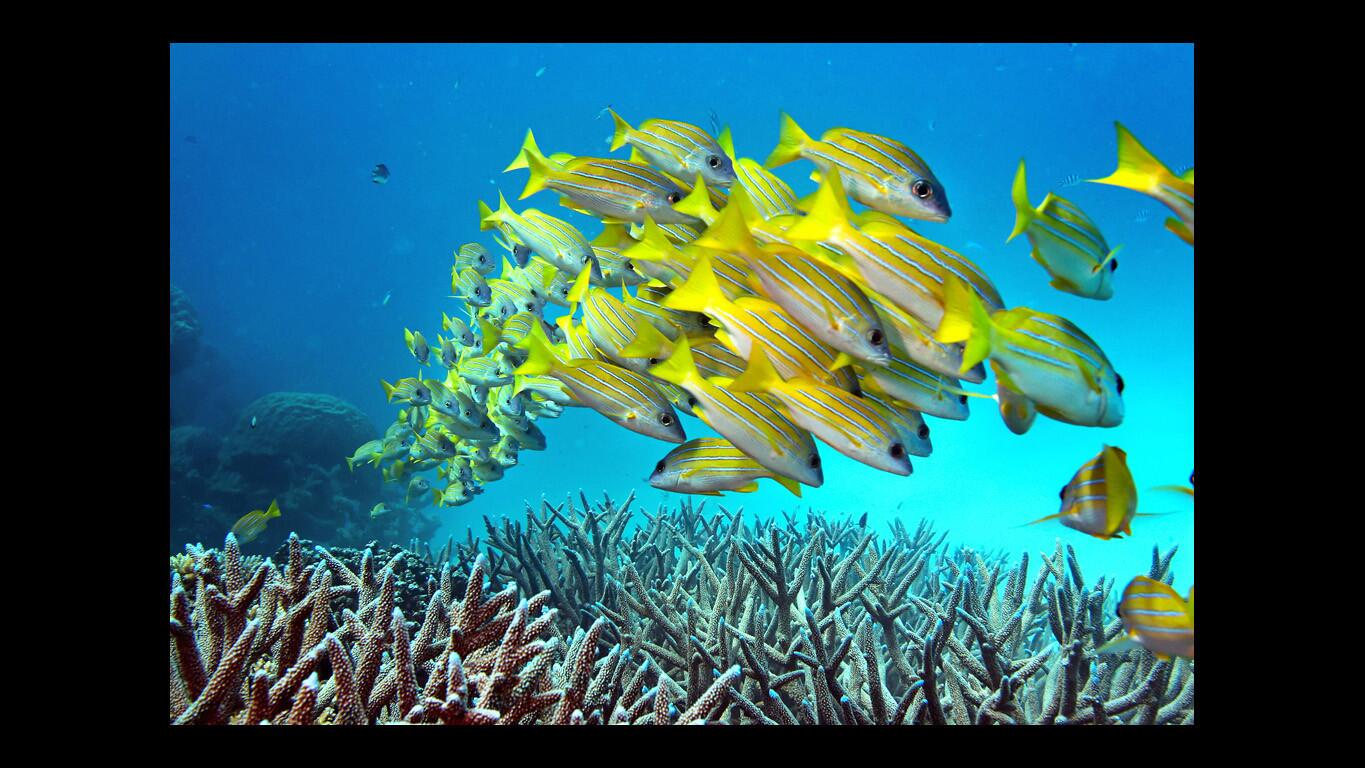
A school of fish stays close to another as they hover over staghorn coral on the Great Barrier Reef in Australia. The world-renowned reef has had a problem with coral bleaching. (Rick Loomis / Los Angeles Times)
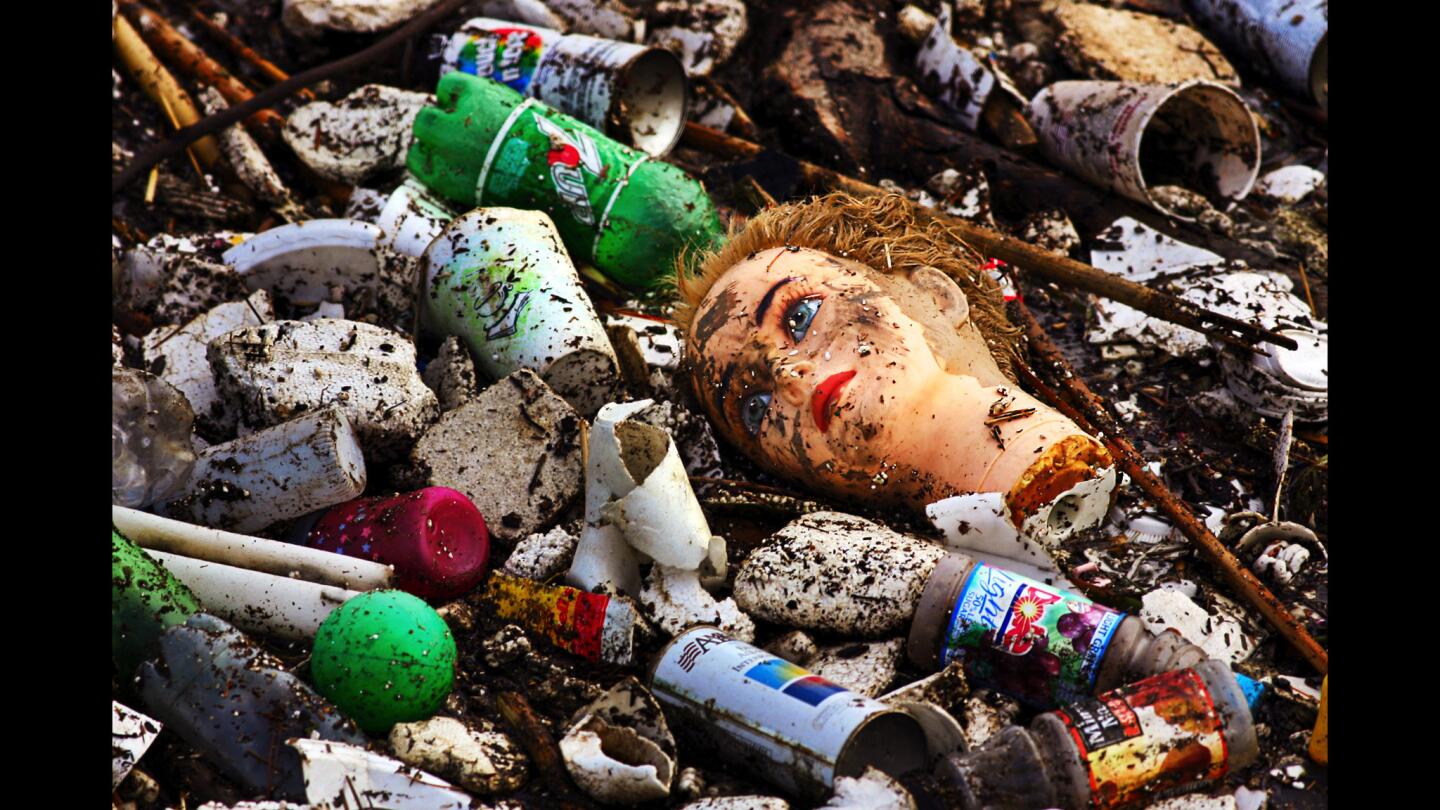
Tons of trash is stacked up against a boom across the Los Angeles River after a heavy rain washed it into Long Beach. A crane was brought in to remove the trash, which includes many plastics, and haul it away. (Rick Loomis / Los Angeles Times)
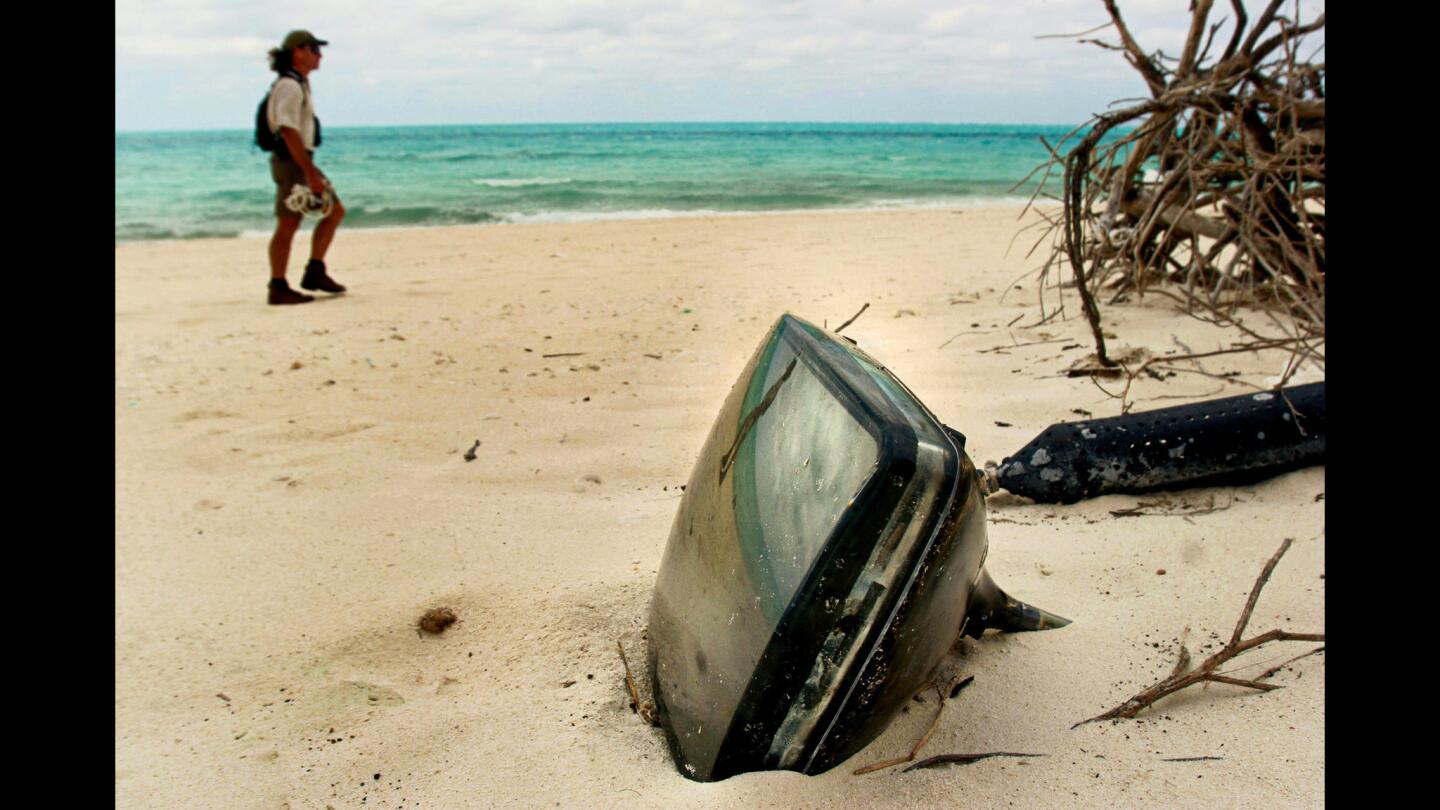
John Klavitter, a wildlife biologist at Midway Atoll National Wildlife Refuge, walks past a television set that washed ashore, adding to a growing collection of trash on the island that disrupts its natural beauty and can be hazardous to land and sea creatures in the area. (Rick Loomis / Los Angeles Times)
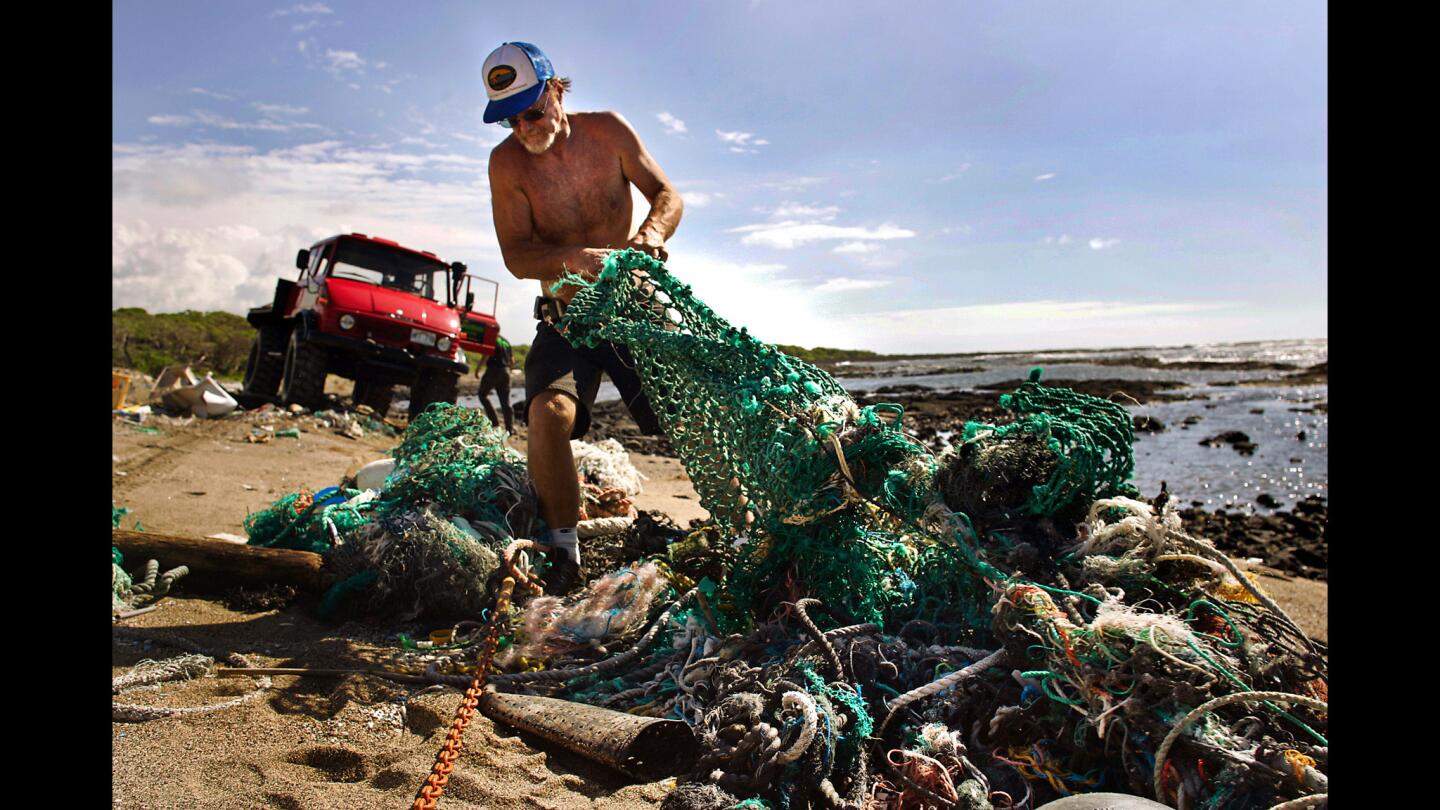
Volunteers haul trash off the otherwise pristine and uninhabited beaches on the coast of the Big Island in Hawaii. Tons of trash floating in the “garbage patch” between Hawaii and the mainland spins off onto Hawaiian beaches. Ghost netting, shown, frequently entangles marine mammals and causes their deaths. (Rick Loomis / Los Angeles Times)
Advertisement
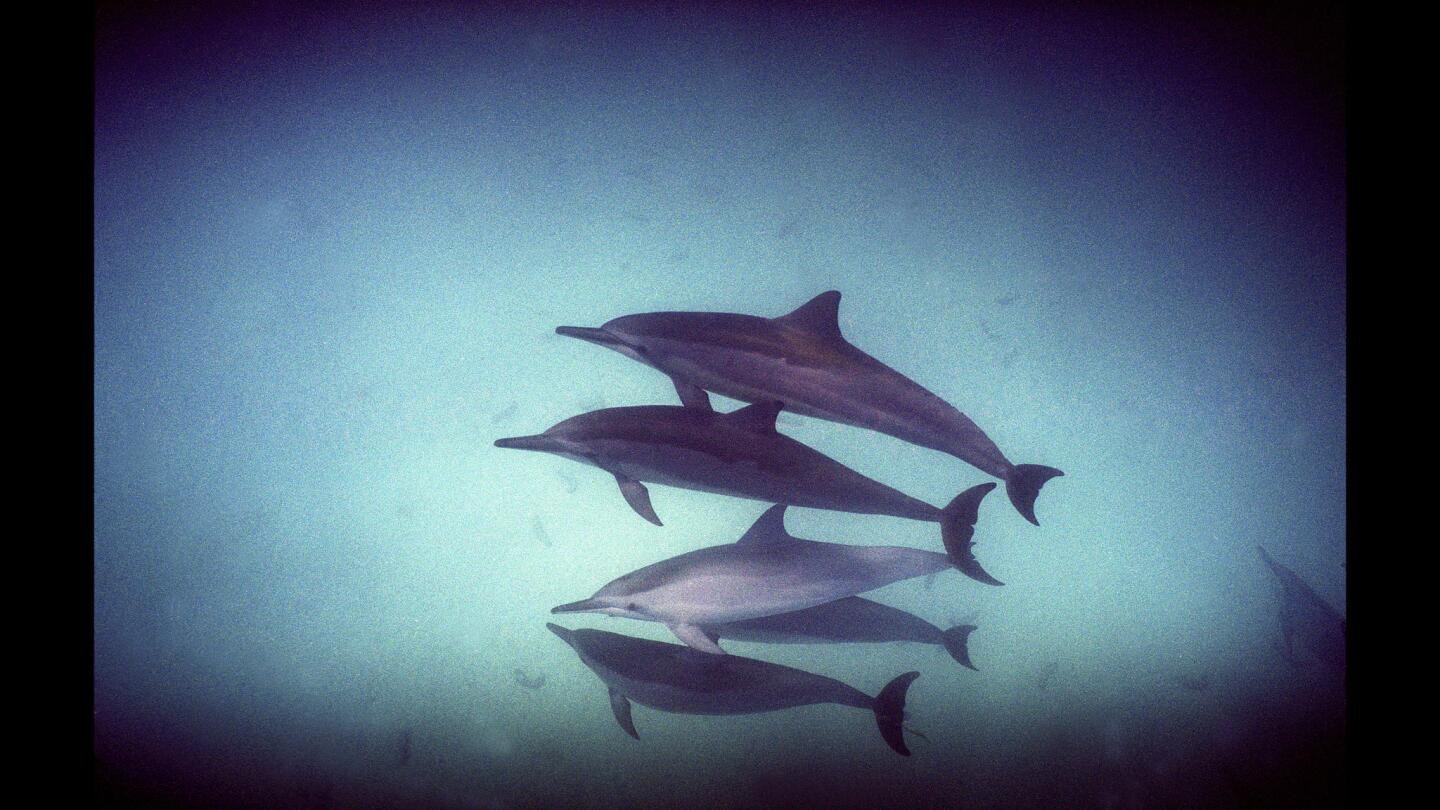
Spinner dolphins ply the waters around at Midway Atoll where they feed in the shallows. Marine mammals are at times caught in ghost netting that is found in the area. (Rick Loomis / Los Angeles Times)







